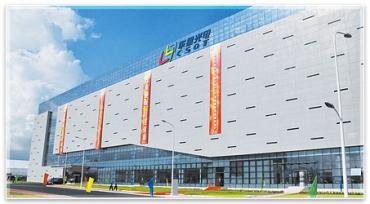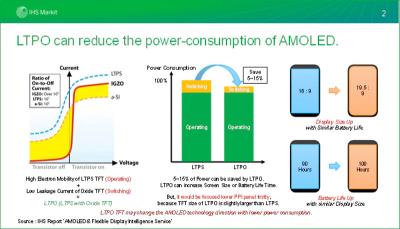OLED Smartphones - introduction and industry news - Page 13
ETNews: BOE reduces OLED production due to chip supply shortage
According to ETNews, BOE reduced its AMOLED production for Apple to about 2-3 months in February and March, down from around 9-10 million units it originally planned to produced, as the company failed to secure enough driver ICs.

ETNews says that LX Semicon (previously Silicon Works) cannot supply BOE with enough driver chips. Most of the company's chips will be supplied to LG's OLED panels.
Samsung launches its latest flagship phones and tablets, the Galaxy S22 series and Galaxy Tab S8 series
Samsung launched a new range of mobile devices, most of which feature AMOLED displays. The new smartphone range starts with the Galaxy S22 which sports a 6.1" 120Hz 1300 nits 1080x2340 Dynamic AMOLED 2X, and the Galaxy S22+ which offers similar specifications but with a larger 6.6" AMOLED which is also brighter at 1,750 nits.

The Galaxy S22 Ultra features a 6.8" 120Hz 1750-nits 1440x3080 Dynamic AMOLED 2X, and also stronger specifications, including up to 1TB of storage, 12GB of RAM, a quad camera setup with a main 108MP sensor and an S Pen stylus.
Omdia: the OLED market grew by 52% in 2021 by area, reached 14.2 million square meters
Omdia says that demand for AMOLED displays increased 52% from 2020, to reach 14.2 million square meters. The main drivers of this growth were higher OLED TV and smartphones sales.
Omdia expects the OLED market to continue its strong growth, even though growth will be slower in the future. The demand for AMOLED display area will grow by CAGR of 11.6% from 2021 to 2028, to reach 30.7 million square meters.
CSoT hopes to start supplying AMOLED display for Apple
TCL subsidiary CSoT is, according to report from Korea, interested in becoming an AMOLED panel supplier for Apple's iPhones.

CSoT has shipped sample panels to Apple, produced at its T4 OLED fab in Wuhan. If Apple's review is positive, CSoT will invest in a demo line for Apple, implementing new technologies required by Apple.
DSCC lowers its 2022 smartphone AMOLED shipment estimates to 700 million units
DSCC have released their 2021 and 2022 smartphone OLED shipment estimates. In 2021, DSCC says that 644 million smartphone AMOLED displays were shipped, up 28% from 2020. Our of these 644 million panels, 42% were rigid, 55% were flexible and about 2% were foldable.
DSCC says that it has downgraded its forecast for 2022, as both Honor and Huawei will no longer adopt rigid AMOLEDs in smartphones. Total shipments will reach almost 700 million panels, and all of the growth will come from flexible and foldable panels. In fact rigid smartphone OLED shipments are expected to decline in 2022.
TCL shows a concept low-cost foldable phone which it hopes to sell at under $700
At CES 2022, TCL unveiled a new clamshell foldable phone concept it refers to as TCL Flex V, which the company hopes to commercialize with a relatively low price tag of around $600-$700.

This seems to be an early stage project, but the current prototype shown at CES used an OLED display that looks to be around 6-inch size with a resolution of 1080x2400. There's also a small external display for when the phone is closed. The phone has a Snapdragon 765G chipset and dual cameras on the back.
Samsung Display shows new foldable and rollable device prototypes
Samsung Display showed new foldable and rollable OLED device prototypes at CES 2022, using the new Flex branding it launched in November 2021.
So first up with have the Flex Slidable, which is a smartphone type device that opens up to a wider display. The second display is the Flex S which is a foldable device that folds twice, once inwardly and once outwardly, in an "S" shape.
Visionox ready to start producing LTPO AMOLED displays
According to reports from China, Visionox has finalized its LTPO R&D project and is now starting to produce LTPO OLED displays. This will enable the company to compete with Samsung and other leading OLED producers for the high-end smartphone display segment.

Low-Temperature Polycrystalline Oxide, or LTPO, is an OLED display backplane technology developed by Apple. LTPO combines both LTPS TFTs and Oxide TFTs (IGZO, Indium Gallium Zinc Oxide) to enable variable refresh rate displays, and power savings of up to 15%. LTPO AMOLED displays are widely used today in high-end smartphones and other mobile devices.
Samsung Display to expand its foldable OLED module production factory in Vietnam
As demand for foldable phones is increasing, Samsung Display is reportedly planning to add three more module production lines in Vietnam to expand its capacity. Once these three new lines are added, SDC will have 10 foldable OLED module production lines in Vietnam.

SDC's current monthly foldable OLED module production capacity is around 1.5 million units, and these new lines will expand SDC's capacity to 2 million units. SDC expects to install the new equipment in 2022. This will help the company reach its target of 18 million foldable OLED panel shipments next year.
DSCC: foldable smartphone shipments grew 480% in Q3 2021
DSCC says that Q3 2021 was a record quarter for foldable smartphones - with shipments growing 215% from Q2 2021 and 480% from Q3 2020 to reach 2.6 million units. Samsung Electronics controls the market with a 93% share, followed by Huawei (6%).
DSCC expects the growth to continue and shipments in Q4 will reach almost 4 million units. Looking at specific models, the Galaxy Z Flip 3 has a 60% share, followed by the Galaxy Z Fold 3 with a 23% share.
Pagination
- Previous page
- Page 13
- Next page






